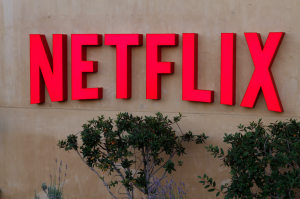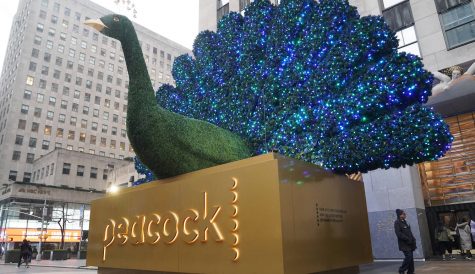Netflix promises ‘more of the core’ business as it seeks to grow
 Netflix will continue to focus on building its core business of premium subscription content as it decides where to allocate its capital, according to co-CEO Greg Peters, speaking at the Goldman Sachs Communacopia and Technology conference.
Netflix will continue to focus on building its core business of premium subscription content as it decides where to allocate its capital, according to co-CEO Greg Peters, speaking at the Goldman Sachs Communacopia and Technology conference.
“if we can executive against the investment we are making already…that is the most impactful thing we can do,” he said.
Netflix still wins fewer that 10% of hours on TV in its most mature markets, with a lot of consumption still on linear, said Peters.
The streaming leader also wins about 5% of consumer spend in this market across most territories, he said, meaning that there is still a long way to go to make the most of the opportunity available to the company.
Peters said there were “lots of forms of competition” but in Netflix’s core area, its competitors were figuring out “how hard it is” to build a scalable streaming business. It is capital intensive but also challenging in terms of putting creative power together with the technology and business platforms necessary to deliver and monetise that content.
“We are pretty good at all of those. We want to be better, but it is a durable competitive advantage,” he said.
He said that Netflix is “more confident than ever” in looking at the premium content space, focusing on long-form content, and added that one area Netflix is looking to is to break down barriers between different sources of content, allowing more non-Hollywood content creators to supply programming to the platform.
On gaming, seen as a supplement to the core, he said that Netflix had started with mobile games, with engagement on that side progressing. He said that the company had launched a cloud streaming initiative, and would progress to take on more technically challenging things.
Paid sharing
On the launch of paid sharing, Peters said it was important for Netflix to make sure people were paying for what they watched – hence its initiative.
Peters said the company had taken pains to “make sure we were getting it right” as it rolled out paid sharing across different countries.
He said “clarity of messaging” was key. It was important to clarify which use cases were acceptable and which were not.
Peters said that casual sharing had sat alongside more organised sharing initiatives such as those seen in Latin American markets. Casual sharers often just signed up for their own accounts, but the imitative that allowed households or family homes with Netflix to add new members had been more suited to markets where access to accounts was divided between multiple members of a family’s circle.
Advertising tier
On Netflix’s ad-supported tier, Peters said that this had widened the range of offers available to allow those seeking a very low-cost solution.
Attractive content and scale are key to attracting advertisers, alongside attractive products and features that deliver interactive capabilities that advertisers can benefit from is key to making this work, he said.
Peters said that Netflix was working with Microsoft to make its offering more attractive to advertisers. Netflix can offer advertising against its top 10 row with an audience measurable instantly, he said, differentiating the offering from broadcast advertising.
He said Netflix would be in the “password sharing business” for some time as it built its solutions out, but this would be a transitional phase. Advertising, on the other hand, is a long-term play. Bringing in personalisaton of advertising and optimising placement as well as differentiating advertising so that it seems to fit well the content people are watching were the key goals, he said.



